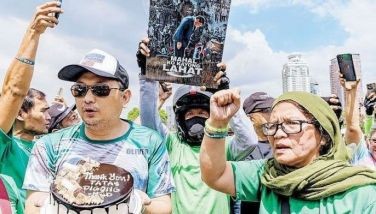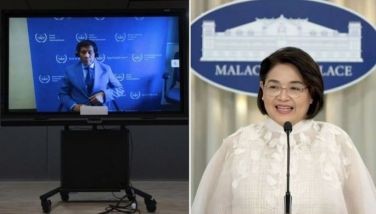‘Cebuano-inspired’ design for BRT
CEBU, Philippines – Stations, terminals and depots of the multi-billion Cebu Bus Rapid Transit would be distinctly bisdak, as the design unveiled by Cebu City Hall yesterday was meant to reflect the Cebuanos’ “sunny disposition and cheerful nature.”
Project Head Rafael Yap yesterday said South Korea-based Kunhwa Engineering and Consultancy’s engineering design that features flowers and the sun was inspired by Cebuano culture.
“The design reflects the sunny disposition of Cebu, the bright and cheerful nature of our people and our festivals,” he said.
The proposed BRT station design shows a motif of an “active and passionate” sun which figuratively shines throughout the city.
Each of the BRT station would have soft curved lines reminiscent of flower petals while the yellow grills that form part of the walls symbolize the sun’s rays.
Kunhwa prepared the detailed engineering design from May to October this year, and included conducting surveys for the project’s hydrological and topographical concerns and the traffic facilities along the project route.
Yap said Kunhwa came up with the design within the proposed timeframe, but the consultancy firm was asked to extend its work by a couple of months more.
“The mayor (Michael Rama) is already okay with the basic design. We will just go through some improvements. The BRT Technical Working Group will recommend (the design) to the DOTC (Department of Transportation and Communication),” he said.
As proposed, there would be a terminal each at the Bulacao area in the southern part of the city, Talamban area in the north, and a third one at the Ayala Mall area of the Cebu Business Park.
Yap said the terminals and depots would use solar energy as power source.
For the stations, he said, natural ventilation would be used since based on the project's feasibility study, the average waiting time for passengers in a station from Bulacao to Ayala during peak hours is only four minutes.
The P10.6-billion project is seen to address Cebu City’s worsening traffic situation.
Yap said that at least 21 bus stations would be constructed for the first phase of the project, which would run from Bulacao to Ayala.
For this phase, Yap said, an off-board ticketing system would be used. This means that passengers would have to buy and pay for their tickets at the station and not inside the bus.
There would be two types of bus stations—symmetric and asymmetric. Both types would be constructed in the middle of existing roads, with locations depending on the width of the road and the expected volume of passengers.
The symmetrical type would be applied to areas with wider roads since the stations for both sides of the BRT would be located beside each other.
The asymmetrical stations, on the other hand, would be built in narrow areas where the stations of the opposing lanes would be constructed one after the other.
Yap said the symmetrical stations would be four meters wide and 83 meters long, while asymmetrical stations would be four meters wide and 166 meters long.
Yap said that for asymmetrical bus stations, two structures would be built while only one structure would be set up for each symmetrical bus station.
In particular, there would be seven symmetrical and two asymmetrical stations along Natalio Bacalso Avenue, three asymmetrical stations and one symmetrical station in Osmeña Boulevard (constructed at the Fuente Osmeña rotunda near Rajah Park Hotel), and one symmetrical and one asymmetrical station each in Escario Street.
There would also be six symmetrical stations at the South Road Properties. In all, the project would have 31 stations, three terminals, and one depot.
Yap said each station would have its bus information system that would show information about the buses as well as slots for advertisements for income generation.
Yap said the stations would have barriers and impact attenuators that would be installed at each end to protect the structures against wayward vehicles. Barriers, he said, would also be installed either on the middle of the road or at the sidewalk to prevent jaywalking.
He said the project would be bid out next year, and construction would start at the Osmeña Boulevard area, particularly from Capitol to the P. Del Rosario Street junction. – /RHM (FREEMAN)
- Latest






















